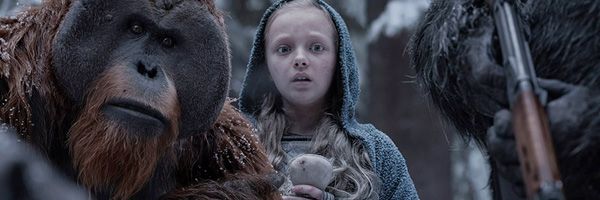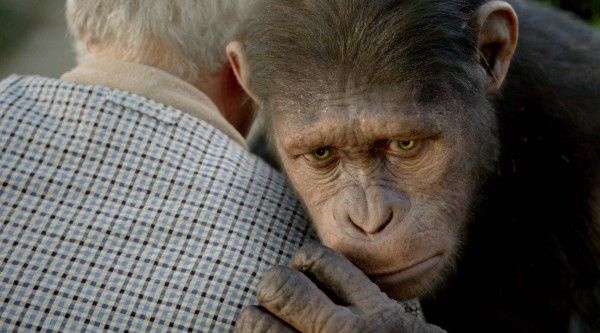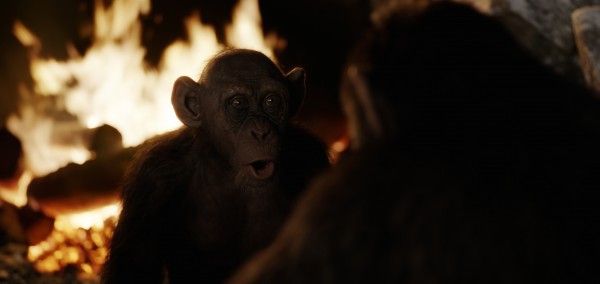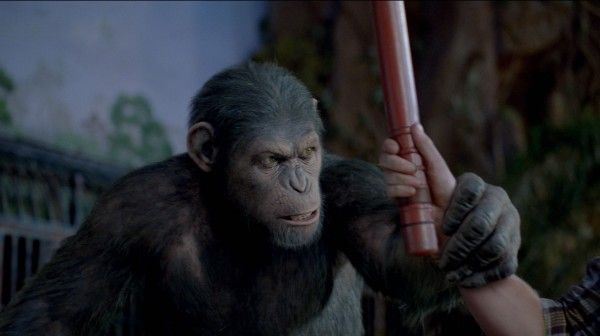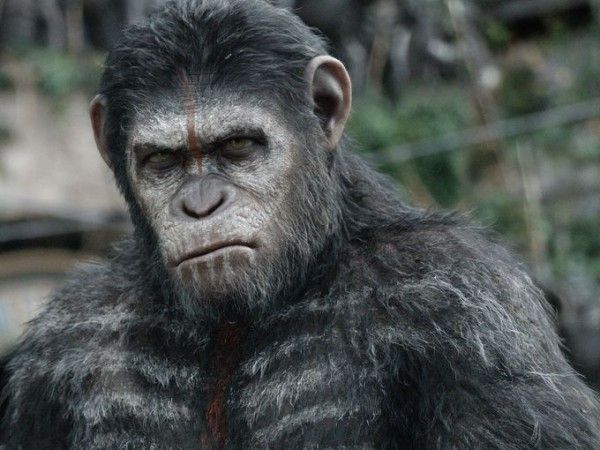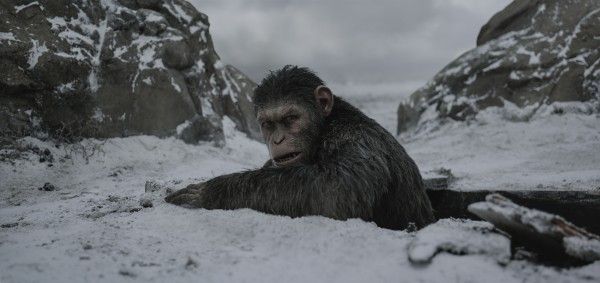Spoilers ahead for the Planet of the Apes trilogy.
The Simian Flu has been the backdrop of the new War for the Planet of the Apes movies. It’s a fairly ingenious plot device since the filmmakers have been able to use it to explain just about everything that happens to all of the characters and the world at large while never having to engage with it directly. These movies are never about finding a cure to the Flu or anything like that. It’s an external factor that then informs how the characters will react.
But if you need a brief refresher on the Simian Flu and how it has affected the stories of the Planet of the Apes trilogy, allow me to help you out.
The Simian Flu begins, like most things that destroy the world in movies, as a well-intentioned cure. In Rise of the Planet of the Apes, scientist Will Rodman (James Franco) is working on a cure for Alzheimer’s disease, which his father Charles (John Lithgow), suffers from. The formula, ALZ-112, is tested on apes, which gives Caesar’s mother, Bright Eyes, enhanced intelligence. She passes that intelligence onto Caesar.
The company behind the drug, Gen-Sys, begins working on a more powerful, gaseous version of the drug, ALZ-113. The ALZ-113 is really the Simian Flu, but it serves two purposes. When Apes are exposed to ALZ-113, they become intelligent. When humans are exposed to ALZ-113, they get sick and die. Will’s assistant, Franklin (Tyler Labine), is Patient Zero, after accidentally getting sprayed with ALZ-113, and he—unknowingly—spreads the virus to other humans. In the closing credits, we see how the virus quickly spreads across the globe.
Dawn of the Planet of the Apes picks up ten years after Rise, and we’re told that the population has been drastically reduced with the only survivors being those who have a genetic immunity to the virus. The status quo holds where the smart apes in Caesar’s tribe are made up of those exposed to ALZ-113, and the remaining humans have weathered the virus and a world war.
War for the Planet of the Apes offers a new twist in a couple ways. First, the virus has mutated, rendering the affected humans as mute. That gets us back to a similar place we saw in the original Planet of the Apes where humans couldn’t speak, and so War offers an explanation as to why. The other major change is that it turns out the virus that killed humans also made all apes smart. That’s why Bad Ape (Steve Zahn), who never directly encountered the ALZ-113 or anyone in Caesar’s tribe, can speak.
It will be interesting to see if the Simian Flu is ever employed again as a plot device. You don’t want to overuse it, especially because if it becomes too much of a thing, then it overshadows the characters and their decisions. The Apes movies have wisely left it as a useful explanation for seismic changes in human and ape biology, but they’ve made sure the core of these movies are about the choices the characters make.

